Adventures in Web-meetings
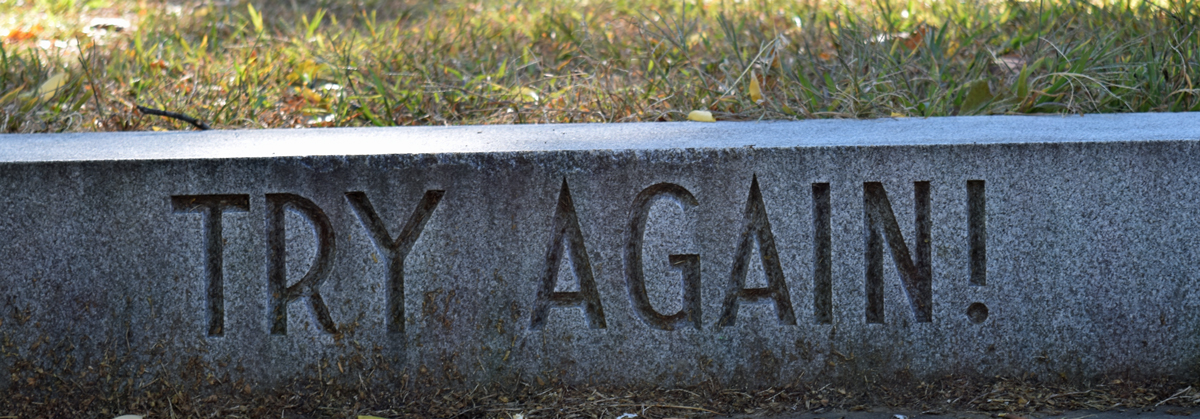 Here in the Northeast, we've endured some whacky weather - high winds and plenty of rain. Not exactly a hurricane, but a giant inconvenience, particularly for those without power since Sunday night. The wind damage and power outages resulted in school cancellations throughout the Merrimack Valley; some school districts are now left with just 2 of the allocated 5-day calendar allowance for snow days before snow season actually starts. Buckle those seat belts, it is going to be a bumpy ride this winter.So what does the weather have to do with web meetings? One of the off-shoots of a no-school day is that all activities after school are cancelled. For me, and the trusty group of participants in the graduate literacy course I am leading, that meant our All-Hallows-Eve session of EDUC 7226 was postponed and would need to be made up.So, in a semi-panic (okay, that was a full-blown panic), I offered the possibility of doing a conference call based lecture to the participants in lieu of a face-to-face class. Making up the class would be a scheduling problem in that the class sessions needed for the full course already occupy every Tuesday between mid-September and December 19. I was pretty certain no one would be enthusiastic about pushing out the end date to the first Tuesday after the holiday break, January 2. We needed to hold the Halloween class now somehow.Anticipating that with 2 days out of school, some people might actually want to try to hold this session even if it was held off-site, I started to wonder about having a conference call where participants could access the slides that I use to accompany our class session. It turned out that quite a few participants were willing to give this a go, even those who were without WIFI and electricity. The problem solvers in the group found ways to overcome those challenges, some even heading over to local coffee shops where WIFI and electricity could still be had.So, my task yesterday morning was to quickly get up-to-speed with webinars and conference calls. Never having hosted such a thing, I Googled "webinars" and discovered hosting an online web-meeting was indeed possible... at a cost of $89/month to $429/month. I was pretty sure the bookkeeper in this family would veto that. Next search was "free+webinar+software" and BINGO! The product I serendipitously discovered was Free Conference Calls.When something is free, there shouldn't be any expectation for easy use or full functionality. Free usually means there will be some pain for the user, because... free, what do you expect?This product, however, is the real deal. Since I had to come up to speed with the product in about 3 hours, I keep my wishlist simple: a) ability for access to audio only (for those listening in on cellphones) or for audio+shared screen b) easy (for me) to negotiate invites and manage participation, and c) free. Free Conference Calls was all of that - and I was able to record myself for participants who may need this class session on instant replay. Other functions that I didn't use (yet) included Q&A boards, break-out sessions, and using pointers and highlighters on my shared screen.At the appointed hour for our class to start, nearly all of the 22 participants in this course were logged in either as either full meeting participants or audio only. The audio recording resides on my Conference Call account as a weblink which will allow anyone who was unable to attend our live meeting to listen in later. And, considering that I'm not the most technology-saavy person on this planet, the fact that all of this went off without a disaster, is totally gratifying.Sometimes the stars do line up in our favor. We are Technology Warriors - every single one of us!
Here in the Northeast, we've endured some whacky weather - high winds and plenty of rain. Not exactly a hurricane, but a giant inconvenience, particularly for those without power since Sunday night. The wind damage and power outages resulted in school cancellations throughout the Merrimack Valley; some school districts are now left with just 2 of the allocated 5-day calendar allowance for snow days before snow season actually starts. Buckle those seat belts, it is going to be a bumpy ride this winter.So what does the weather have to do with web meetings? One of the off-shoots of a no-school day is that all activities after school are cancelled. For me, and the trusty group of participants in the graduate literacy course I am leading, that meant our All-Hallows-Eve session of EDUC 7226 was postponed and would need to be made up.So, in a semi-panic (okay, that was a full-blown panic), I offered the possibility of doing a conference call based lecture to the participants in lieu of a face-to-face class. Making up the class would be a scheduling problem in that the class sessions needed for the full course already occupy every Tuesday between mid-September and December 19. I was pretty certain no one would be enthusiastic about pushing out the end date to the first Tuesday after the holiday break, January 2. We needed to hold the Halloween class now somehow.Anticipating that with 2 days out of school, some people might actually want to try to hold this session even if it was held off-site, I started to wonder about having a conference call where participants could access the slides that I use to accompany our class session. It turned out that quite a few participants were willing to give this a go, even those who were without WIFI and electricity. The problem solvers in the group found ways to overcome those challenges, some even heading over to local coffee shops where WIFI and electricity could still be had.So, my task yesterday morning was to quickly get up-to-speed with webinars and conference calls. Never having hosted such a thing, I Googled "webinars" and discovered hosting an online web-meeting was indeed possible... at a cost of $89/month to $429/month. I was pretty sure the bookkeeper in this family would veto that. Next search was "free+webinar+software" and BINGO! The product I serendipitously discovered was Free Conference Calls.When something is free, there shouldn't be any expectation for easy use or full functionality. Free usually means there will be some pain for the user, because... free, what do you expect?This product, however, is the real deal. Since I had to come up to speed with the product in about 3 hours, I keep my wishlist simple: a) ability for access to audio only (for those listening in on cellphones) or for audio+shared screen b) easy (for me) to negotiate invites and manage participation, and c) free. Free Conference Calls was all of that - and I was able to record myself for participants who may need this class session on instant replay. Other functions that I didn't use (yet) included Q&A boards, break-out sessions, and using pointers and highlighters on my shared screen.At the appointed hour for our class to start, nearly all of the 22 participants in this course were logged in either as either full meeting participants or audio only. The audio recording resides on my Conference Call account as a weblink which will allow anyone who was unable to attend our live meeting to listen in later. And, considering that I'm not the most technology-saavy person on this planet, the fact that all of this went off without a disaster, is totally gratifying.Sometimes the stars do line up in our favor. We are Technology Warriors - every single one of us!
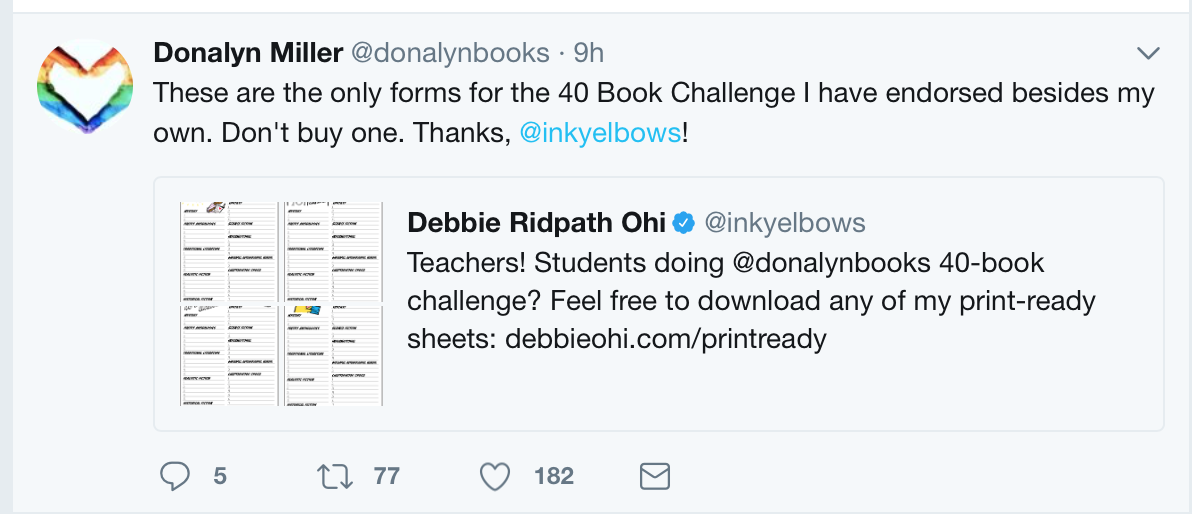
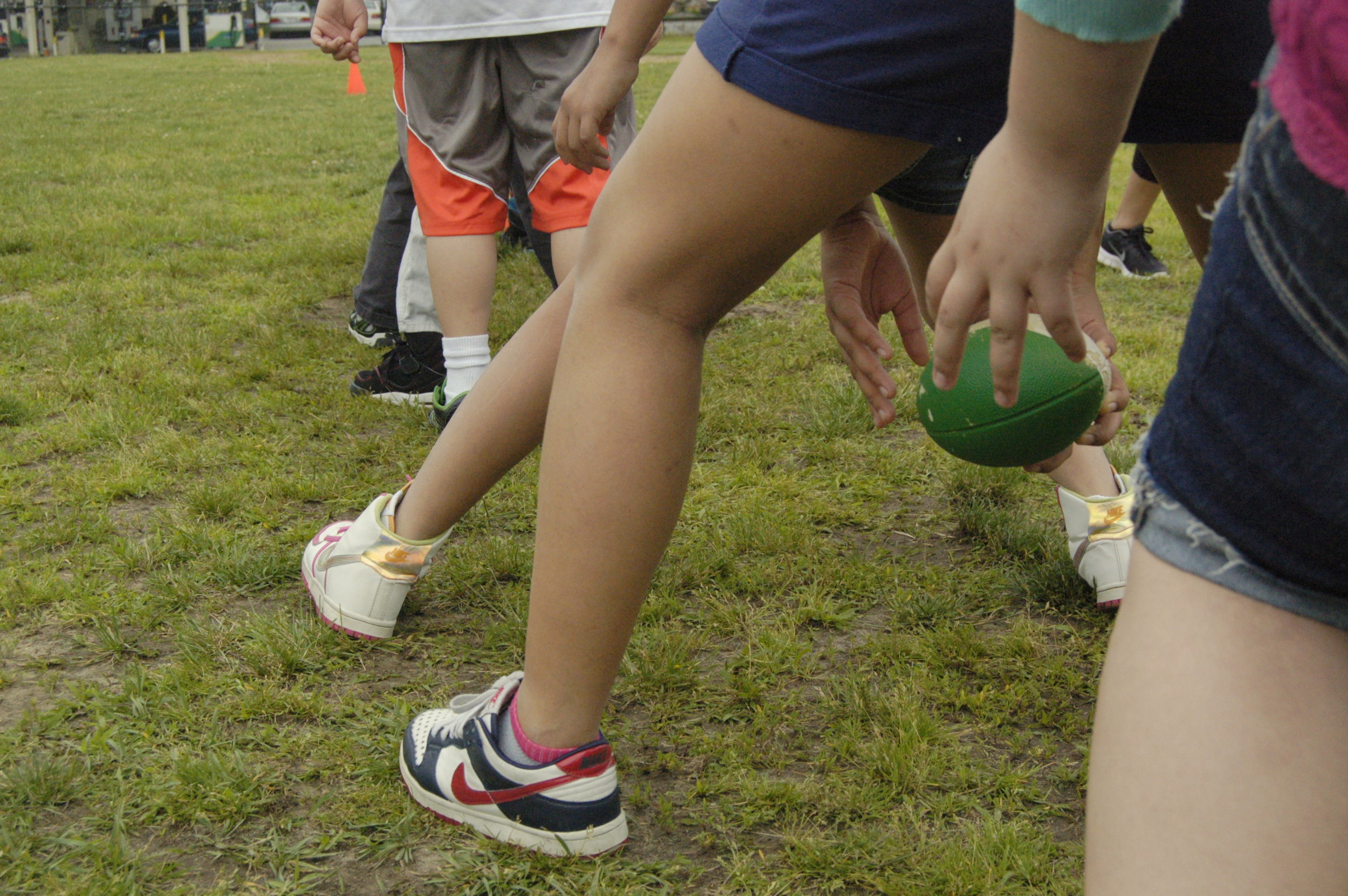 About 10 years ago, I was introduced to the Responsive Classroom, a program that was highly supported in the school in which I worked. There are many
About 10 years ago, I was introduced to the Responsive Classroom, a program that was highly supported in the school in which I worked. There are many 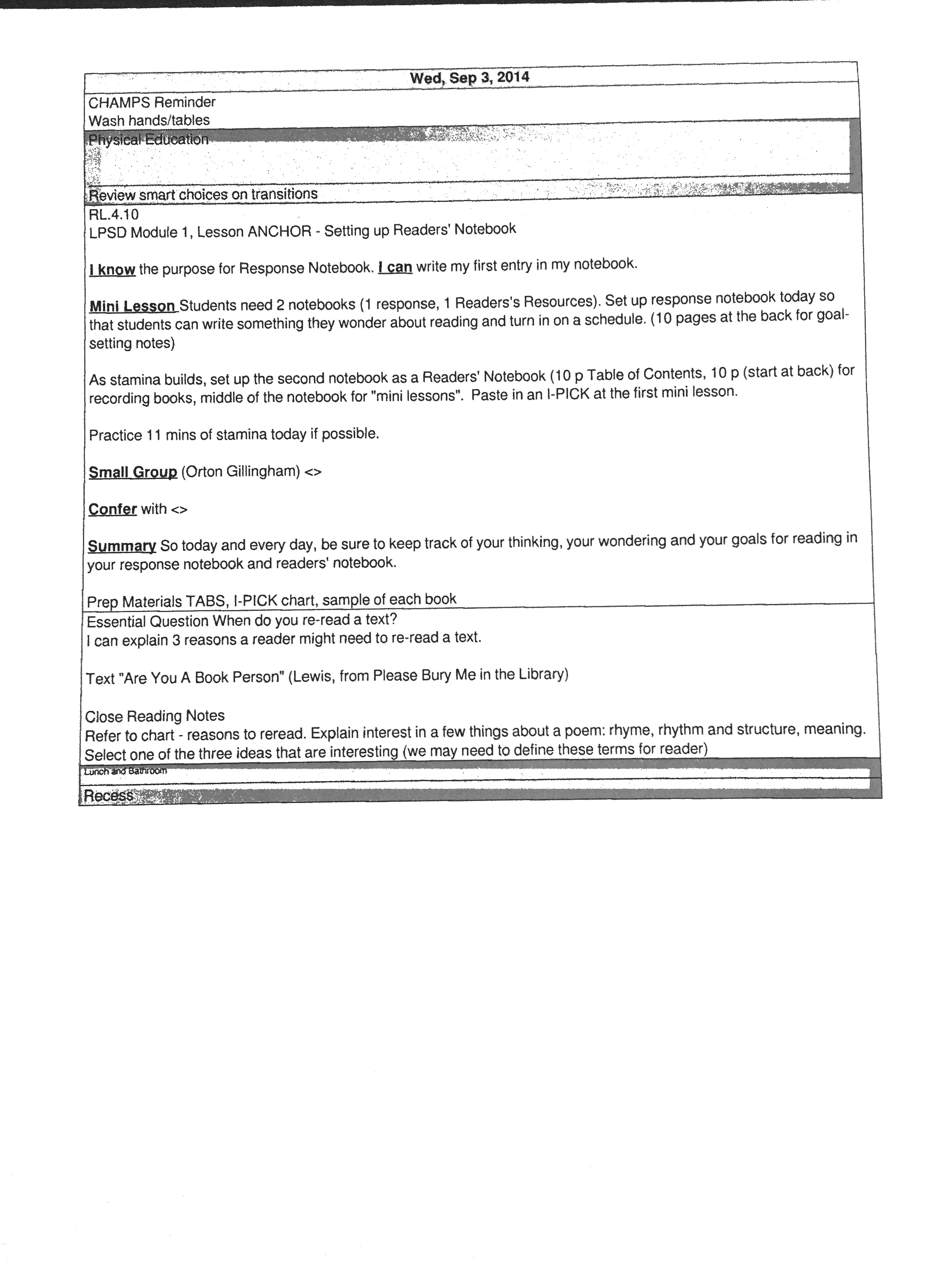
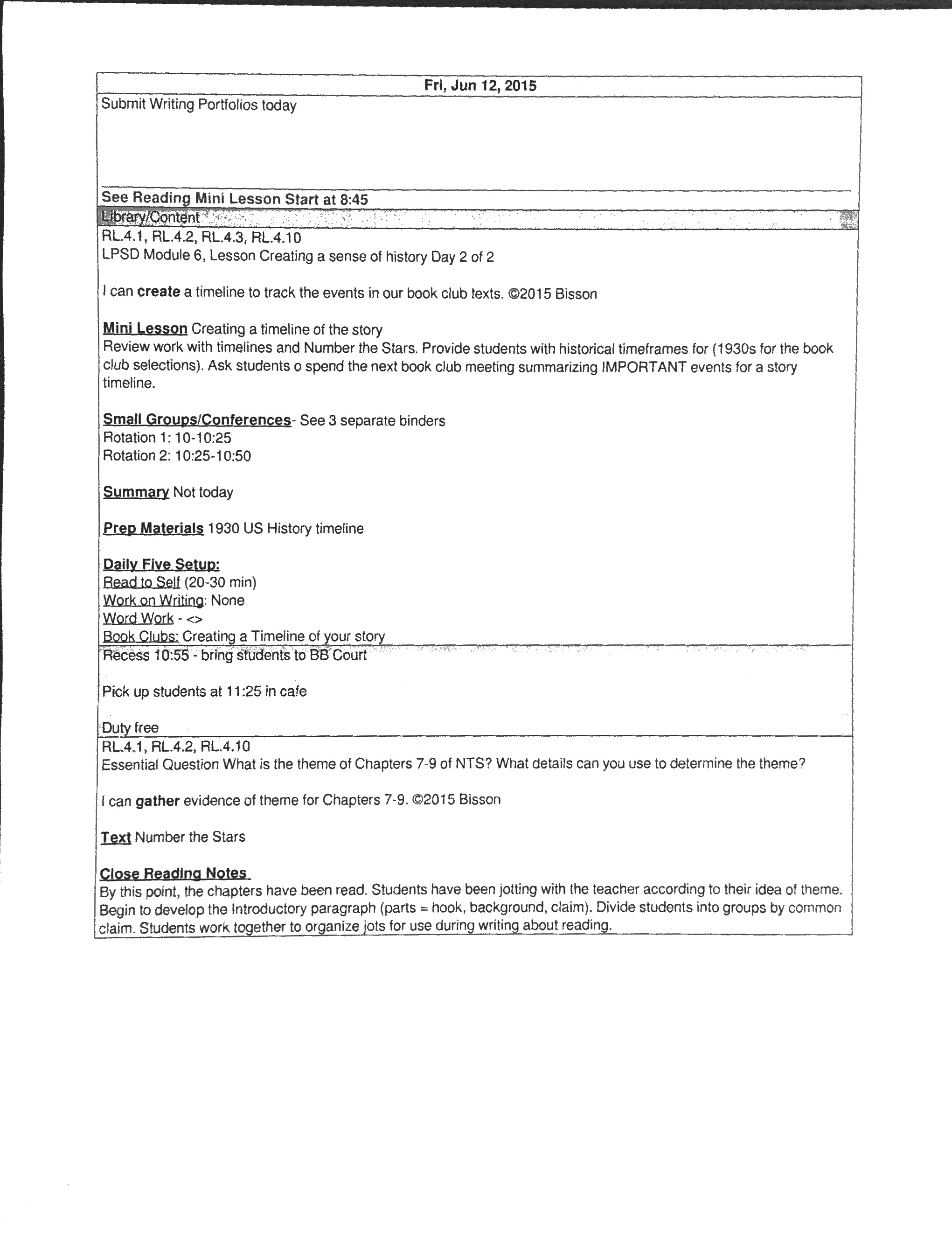
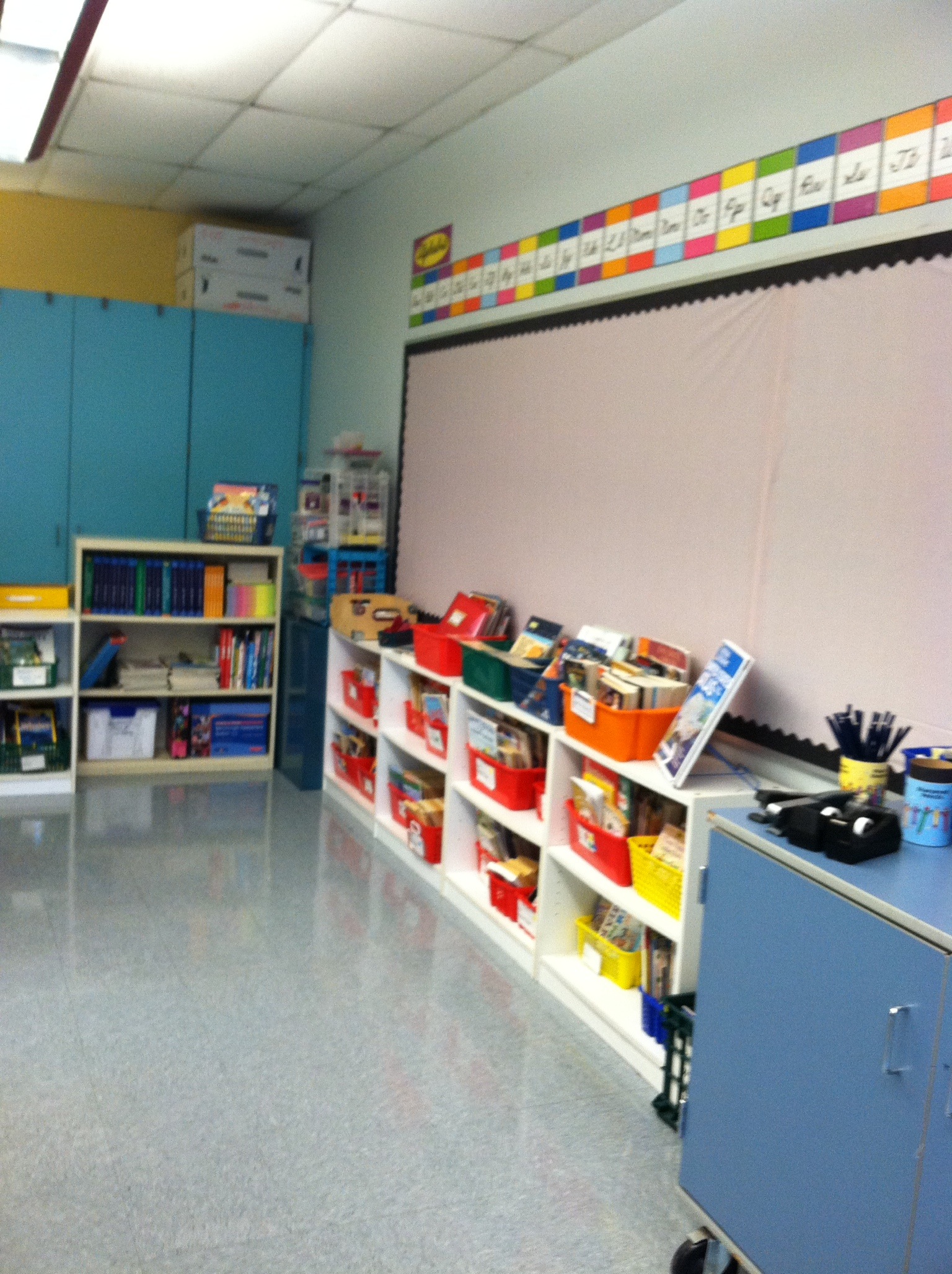

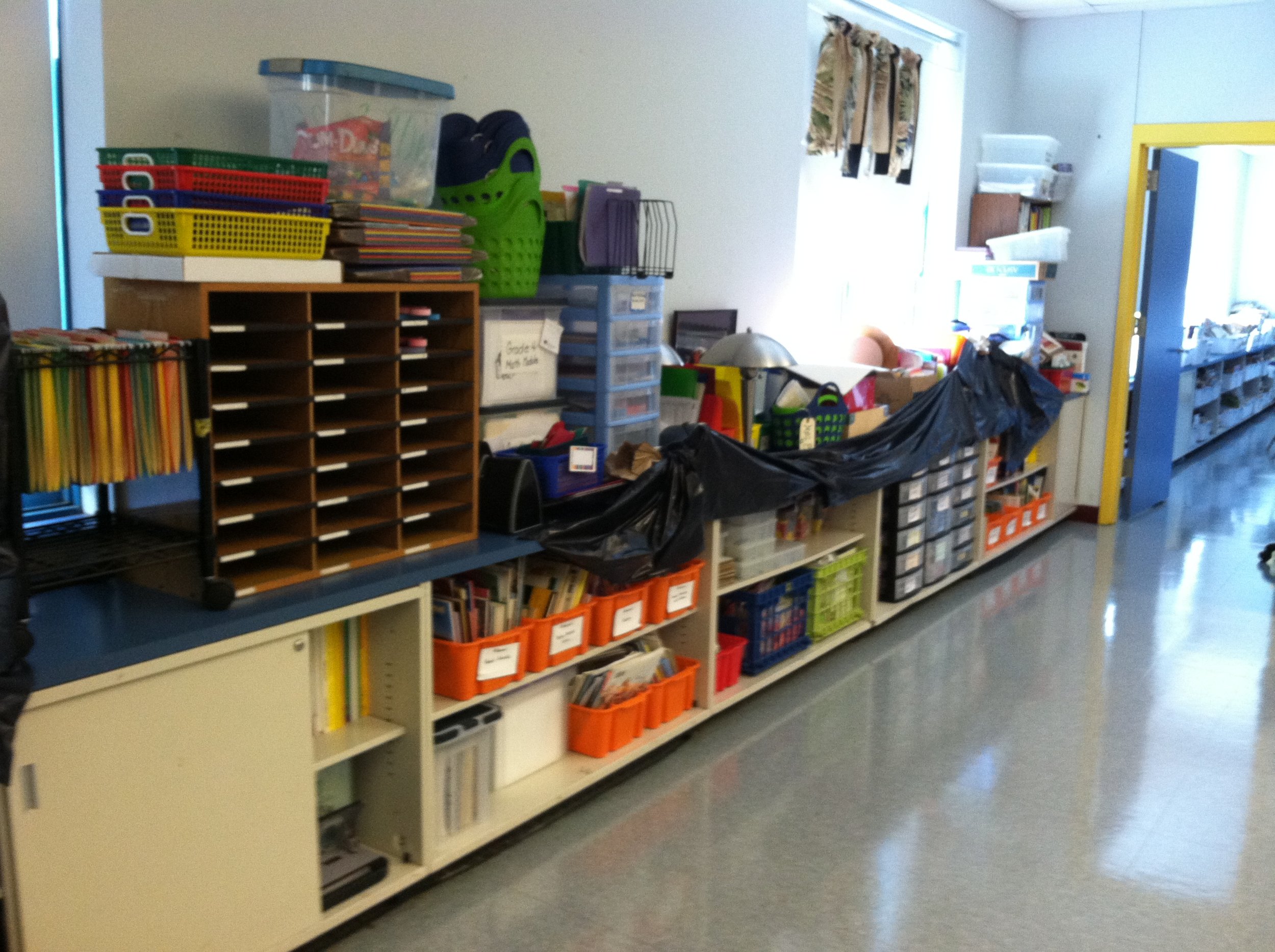
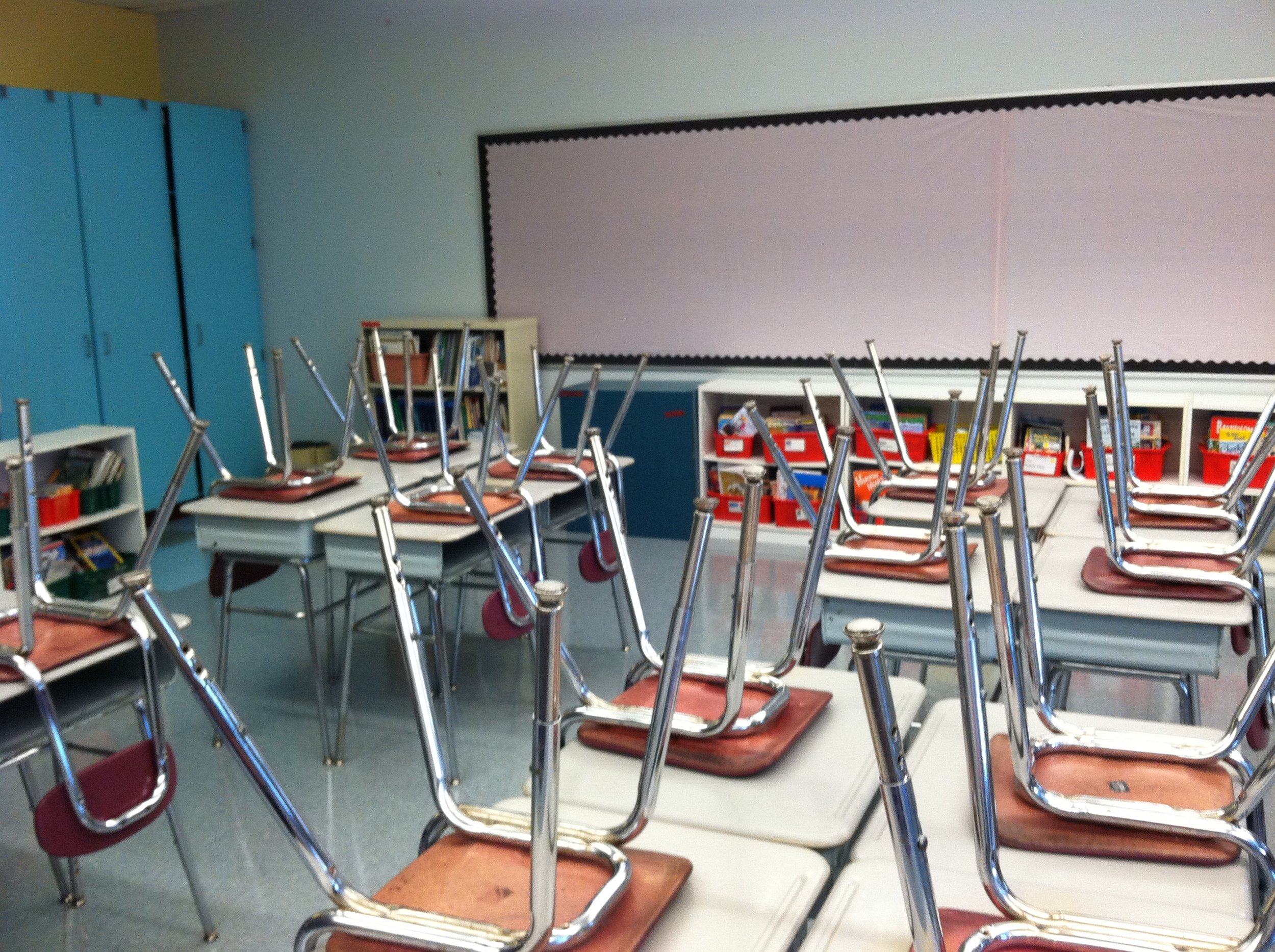

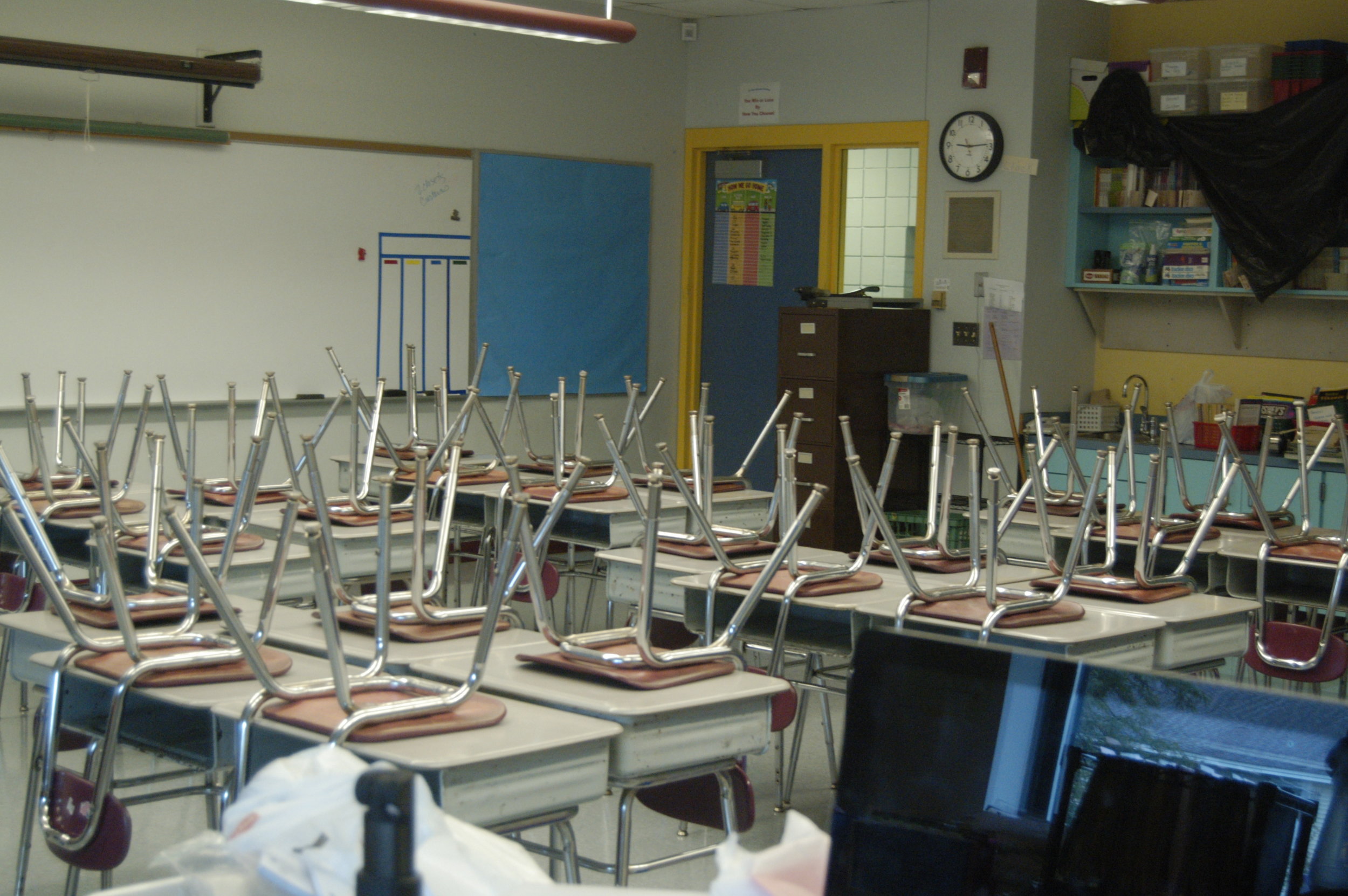
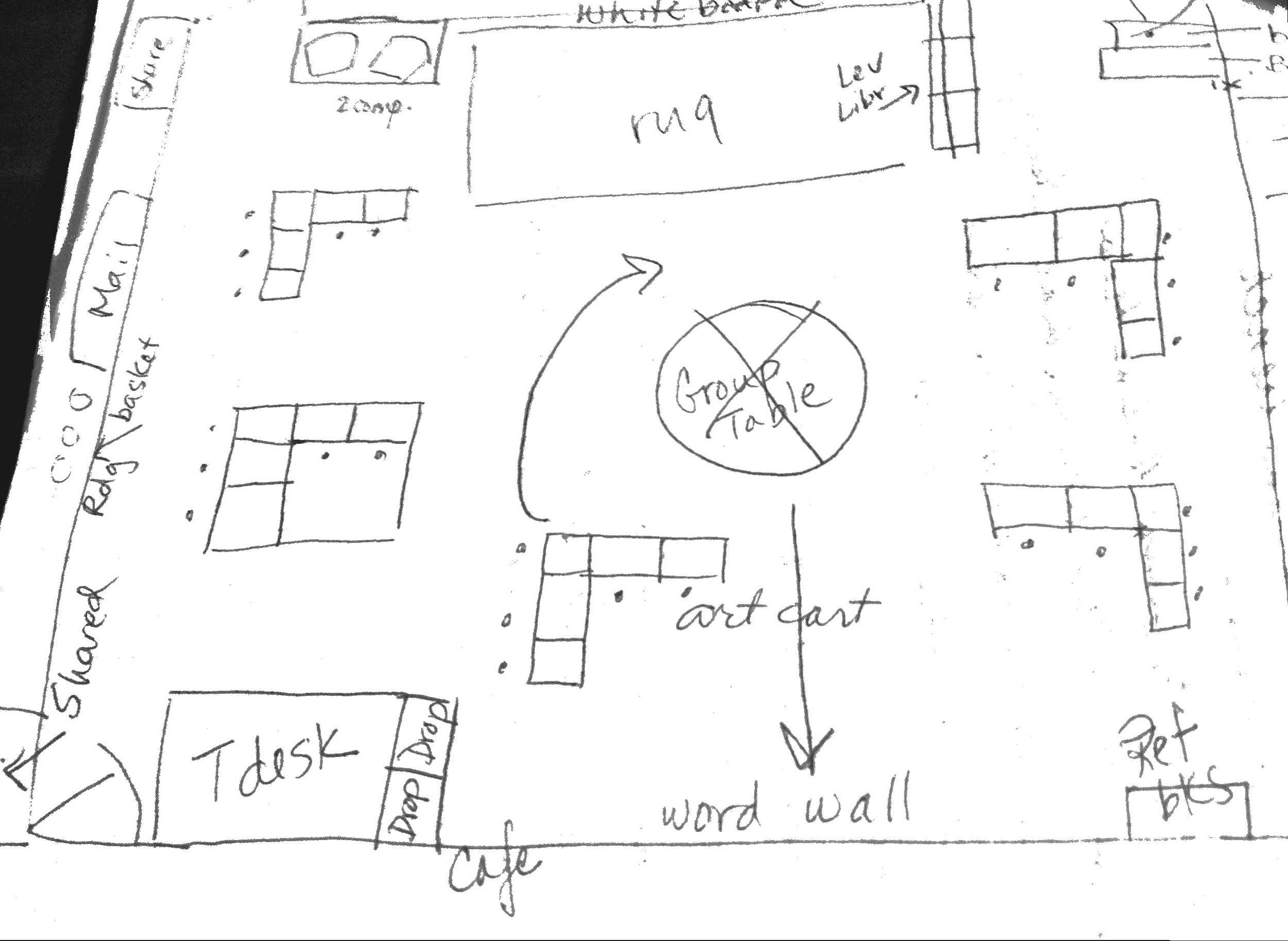
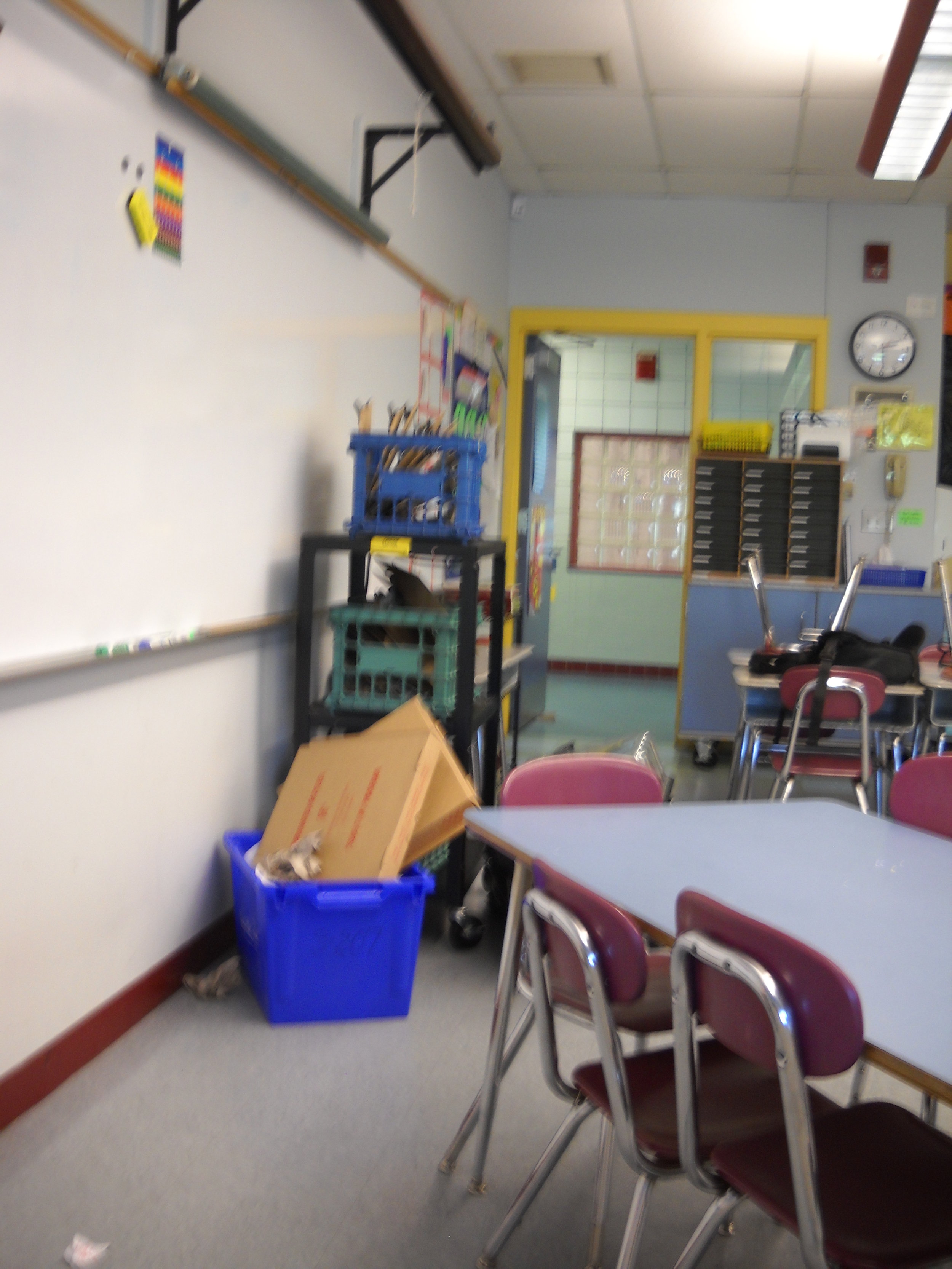
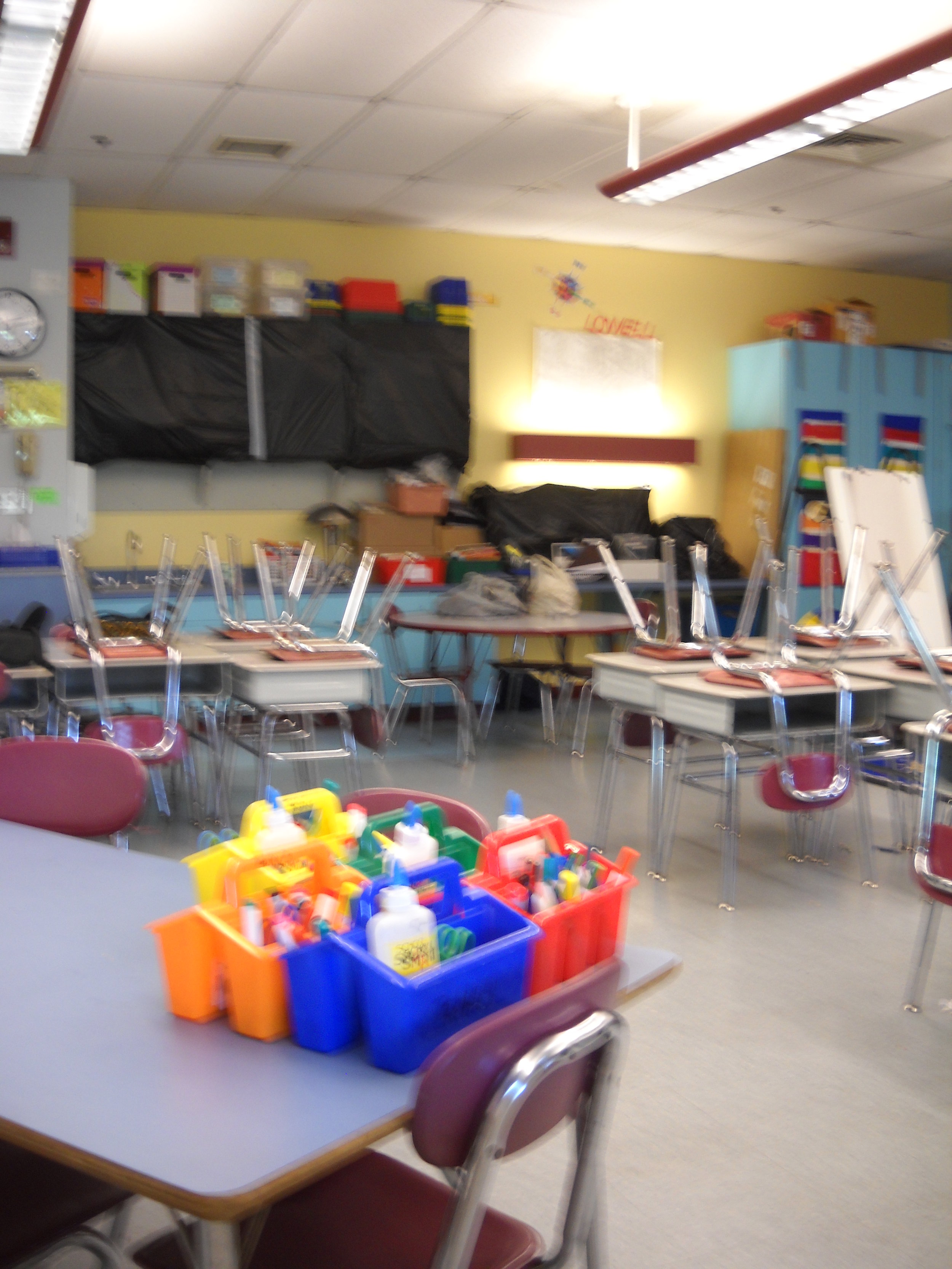
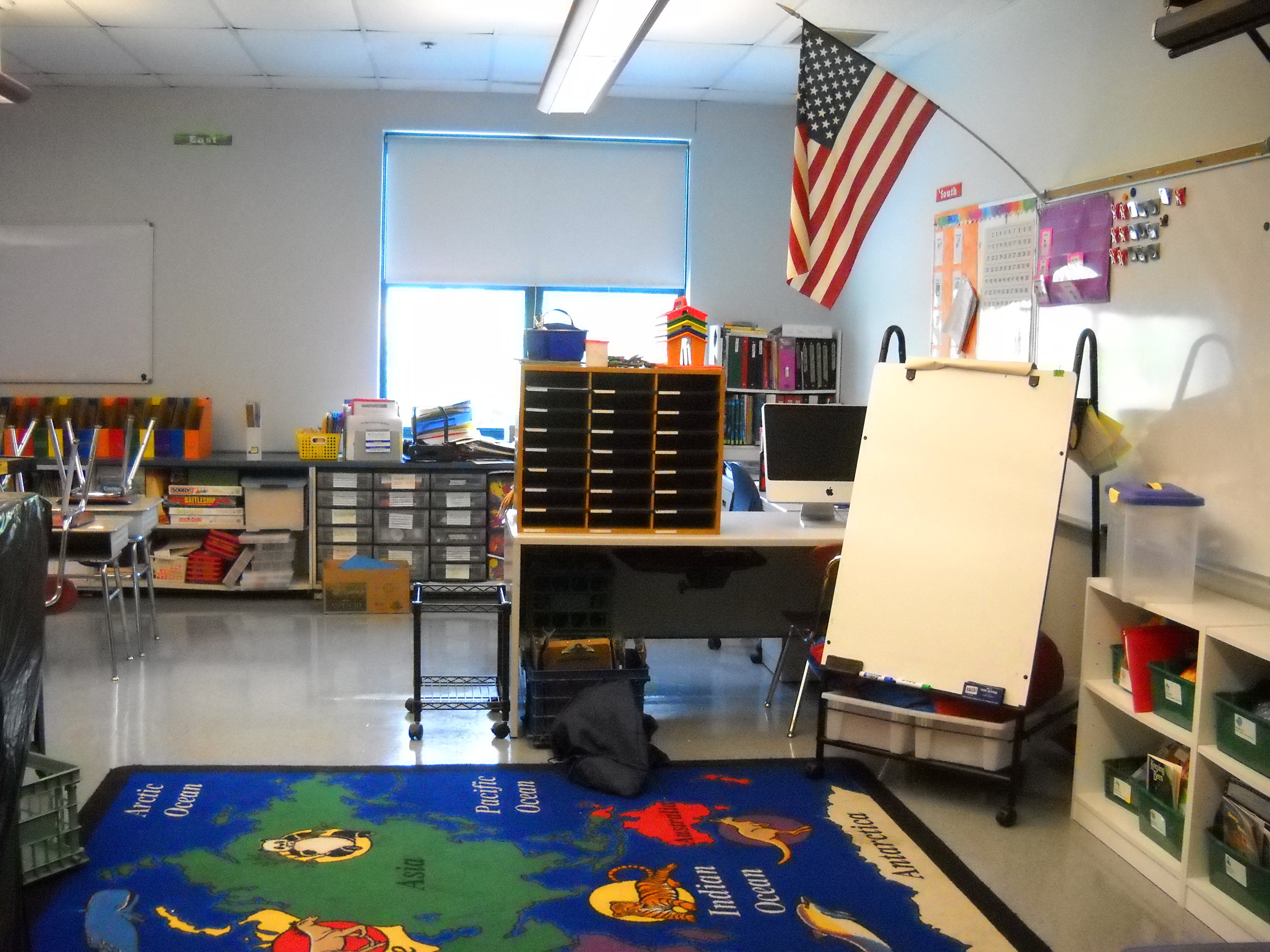

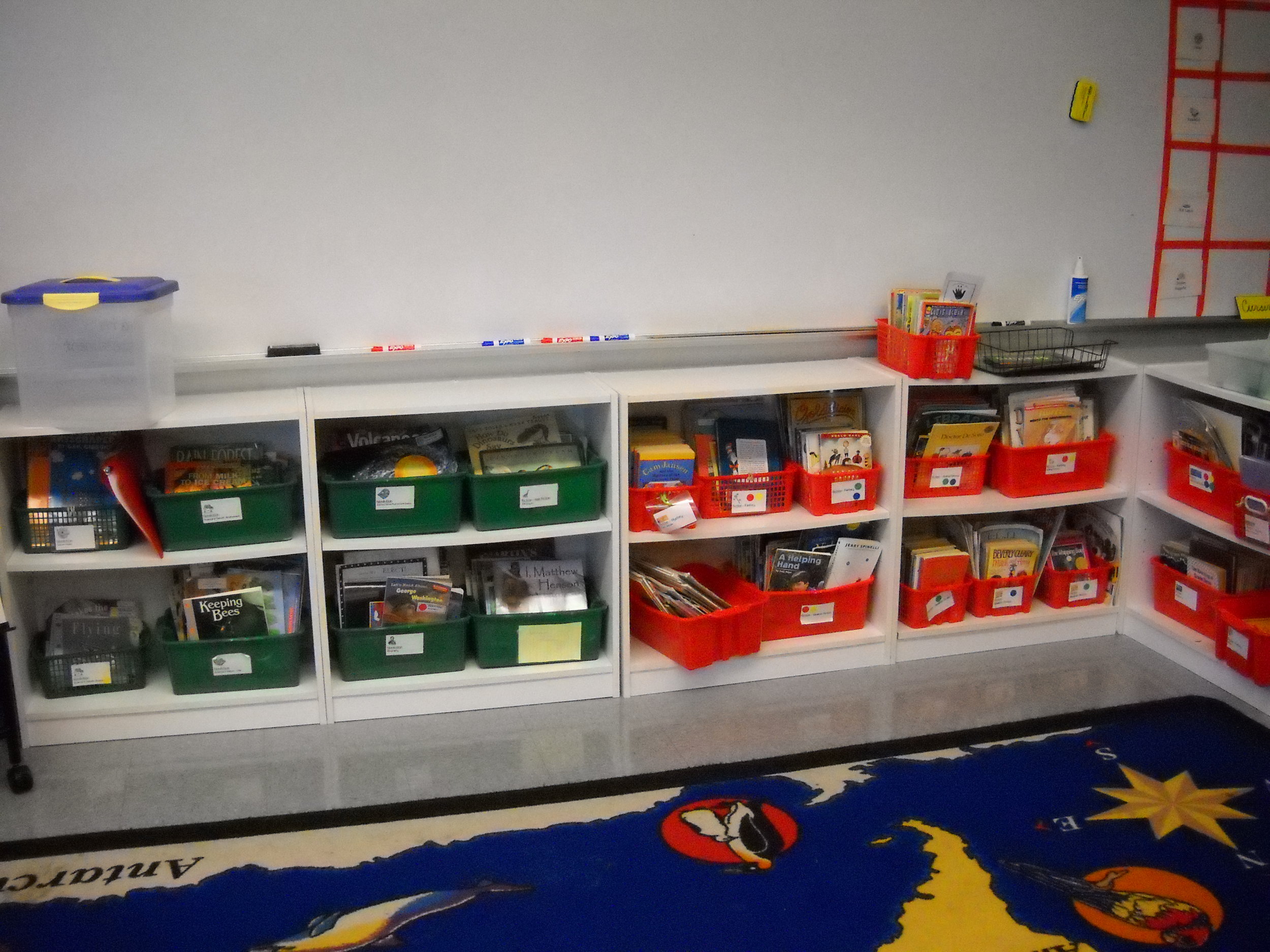
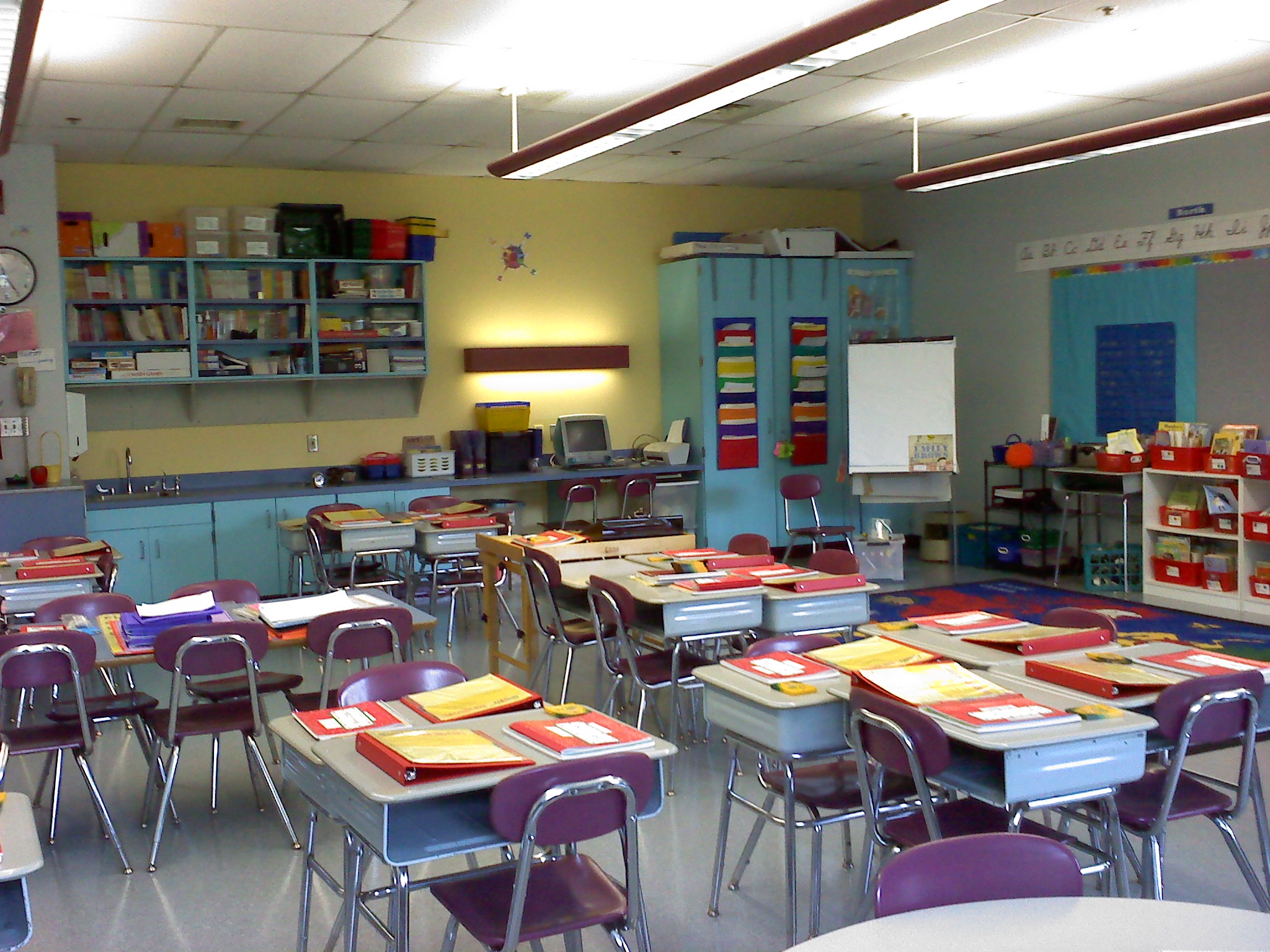 I did change the desk arrangements around, partly to accomodate a student in a wheelchair and with a wheelchair accessible desk and partly because I just don't want to give up on cooperative groupings of 3 or 4 students. I like grouping my students heterogeneously so that they can talk to each other when they are stuck, need help, don't remember what to do. As you can see from this shot, a large meeting area takes a good part of the classroom. It's important to me to get down on the floor on the same level with the students and this is one way I achieve that.At this time, there are minimal supplies on the students' desks. The empty red writing binder and 5 tab dividers, a word study
I did change the desk arrangements around, partly to accomodate a student in a wheelchair and with a wheelchair accessible desk and partly because I just don't want to give up on cooperative groupings of 3 or 4 students. I like grouping my students heterogeneously so that they can talk to each other when they are stuck, need help, don't remember what to do. As you can see from this shot, a large meeting area takes a good part of the classroom. It's important to me to get down on the floor on the same level with the students and this is one way I achieve that.At this time, there are minimal supplies on the students' desks. The empty red writing binder and 5 tab dividers, a word study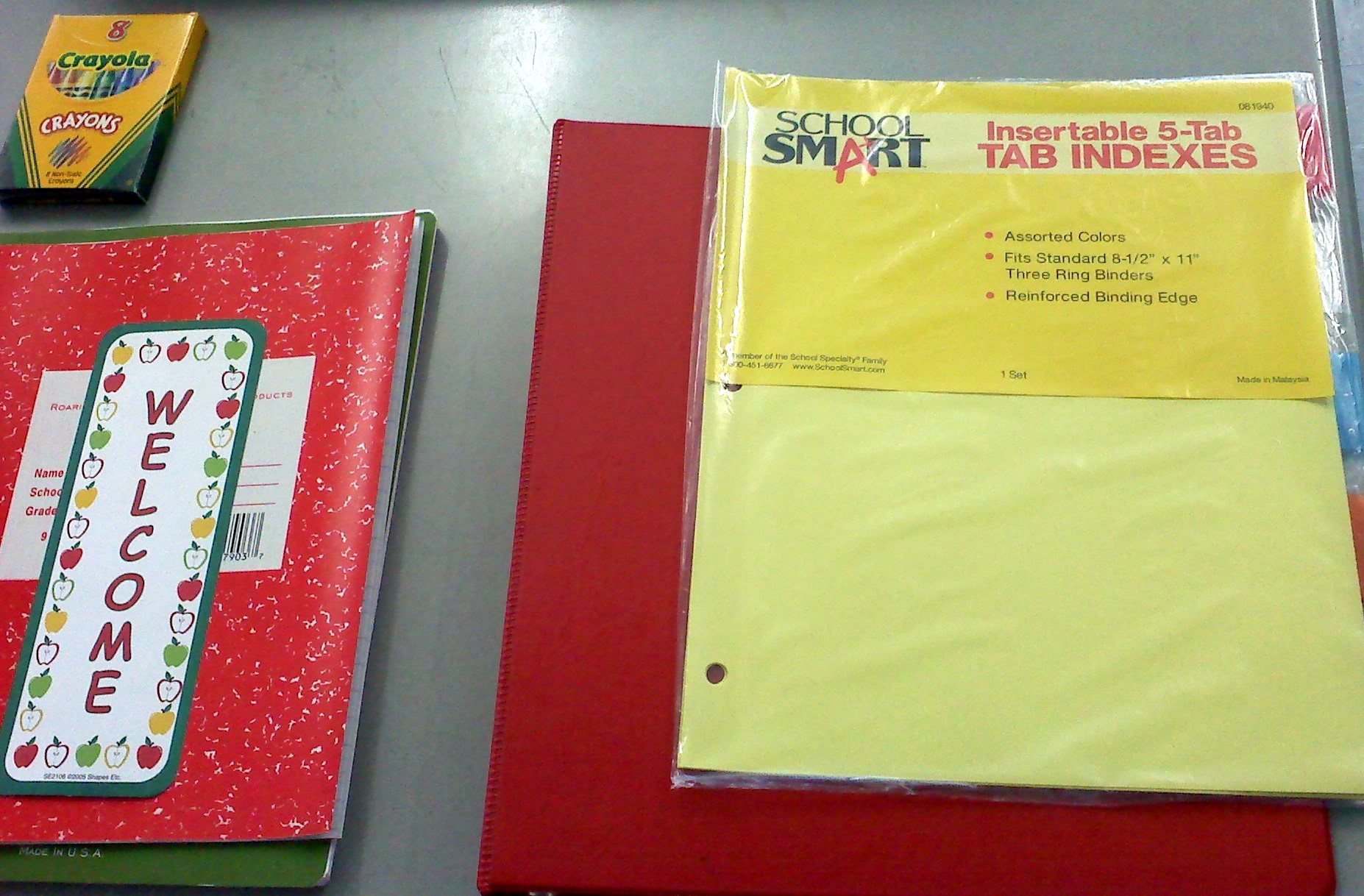 test book, a spiral notebook used as a math journal, crayons and a bookmark. Once my class list is fairly final -- on Monday during Staff Orientation -- I'll add a personalized materials. Working in urban schools for the last 20+ years has taught me to be cautious about personalizing materials until the students actually arrive in the classroom. Over the last week my class roster has fluctuated from 18 to 20 to 19 as students move around the district to another elementary school. Students will continue to enroll in the District through the week after Labor Day as not all parents will be familiar with the early start date.Melissa and I read through the cumlative folders and IEPs of the incoming students. It is good to think and plan ahead for these students: How can we adapt and change materials so that everyone feels successful? There are so many questions that need answers.As of today, the physical space is prepared. The first 3 days of plans have been sketched out, and I am as ready as I can be at the moment. Waiting for the first bell on Tuesday with lots of First Day Jitters.
test book, a spiral notebook used as a math journal, crayons and a bookmark. Once my class list is fairly final -- on Monday during Staff Orientation -- I'll add a personalized materials. Working in urban schools for the last 20+ years has taught me to be cautious about personalizing materials until the students actually arrive in the classroom. Over the last week my class roster has fluctuated from 18 to 20 to 19 as students move around the district to another elementary school. Students will continue to enroll in the District through the week after Labor Day as not all parents will be familiar with the early start date.Melissa and I read through the cumlative folders and IEPs of the incoming students. It is good to think and plan ahead for these students: How can we adapt and change materials so that everyone feels successful? There are so many questions that need answers.As of today, the physical space is prepared. The first 3 days of plans have been sketched out, and I am as ready as I can be at the moment. Waiting for the first bell on Tuesday with lots of First Day Jitters. Time Spent: 4 hoursThis morning I loaded up the Jetta with our new shop vac -- more power! -- and began cleaning up the dust from the floor replacement. Here's what was all over every surface, nook, and cranny of my classroom (even behind closed cupboards - this stuff goes everywhere).Cleanup meant first sucking all the dust with the shop vac and then wet mopping it with paper towels and cleaner -- sometimes twice. It was nasty stuff. The floor installers left some panels off and the floor vents took a major beating as well as one of the built in metal shelves. That'll all need fixing by the pros.By the end of the four hours, The room was cleaned up and all the decorating that I plan to do completed. We are a Responsive Classroom school and one of the things we do to build community is to decorate (reference charts, etc.) together. The only exception I made for myself this year is the alphabet chart. Due to a shoulder injury, I didn't take that down -- but if the students have some preferred spot, I will and with help put it up according to the consensus. So here are a couple of shots of the classroom configuration right now:Meeting Area Rug: The classroom library and a large bulletin board abut this area. I have put the easel at one corner (my coat clo
Time Spent: 4 hoursThis morning I loaded up the Jetta with our new shop vac -- more power! -- and began cleaning up the dust from the floor replacement. Here's what was all over every surface, nook, and cranny of my classroom (even behind closed cupboards - this stuff goes everywhere).Cleanup meant first sucking all the dust with the shop vac and then wet mopping it with paper towels and cleaner -- sometimes twice. It was nasty stuff. The floor installers left some panels off and the floor vents took a major beating as well as one of the built in metal shelves. That'll all need fixing by the pros.By the end of the four hours, The room was cleaned up and all the decorating that I plan to do completed. We are a Responsive Classroom school and one of the things we do to build community is to decorate (reference charts, etc.) together. The only exception I made for myself this year is the alphabet chart. Due to a shoulder injury, I didn't take that down -- but if the students have some preferred spot, I will and with help put it up according to the consensus. So here are a couple of shots of the classroom configuration right now:Meeting Area Rug: The classroom library and a large bulletin board abut this area. I have put the easel at one corner (my coat clo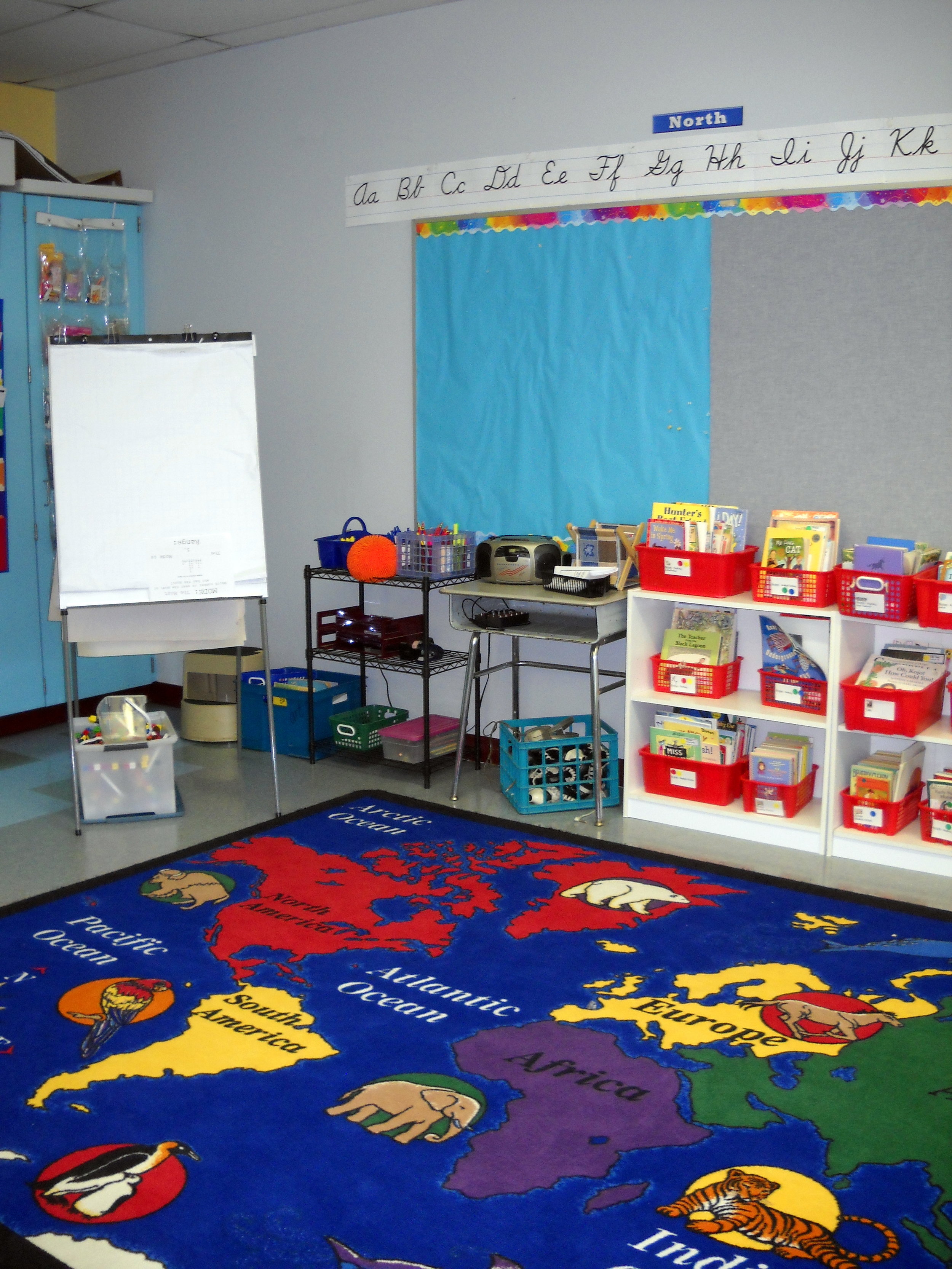 set and 2 storage closets are beyond that) and I keep the snapcubes for our math investigations in a crate under the easel. Also against the wall I have shelves that hold supplies for Writing Workshop (editing/revising pencils, forms, paper, art supplies), a listening center CD player, and a crate of cushions and 2 large beanbags.
set and 2 storage closets are beyond that) and I keep the snapcubes for our math investigations in a crate under the easel. Also against the wall I have shelves that hold supplies for Writing Workshop (editing/revising pencils, forms, paper, art supplies), a listening center CD player, and a crate of cushions and 2 large beanbags.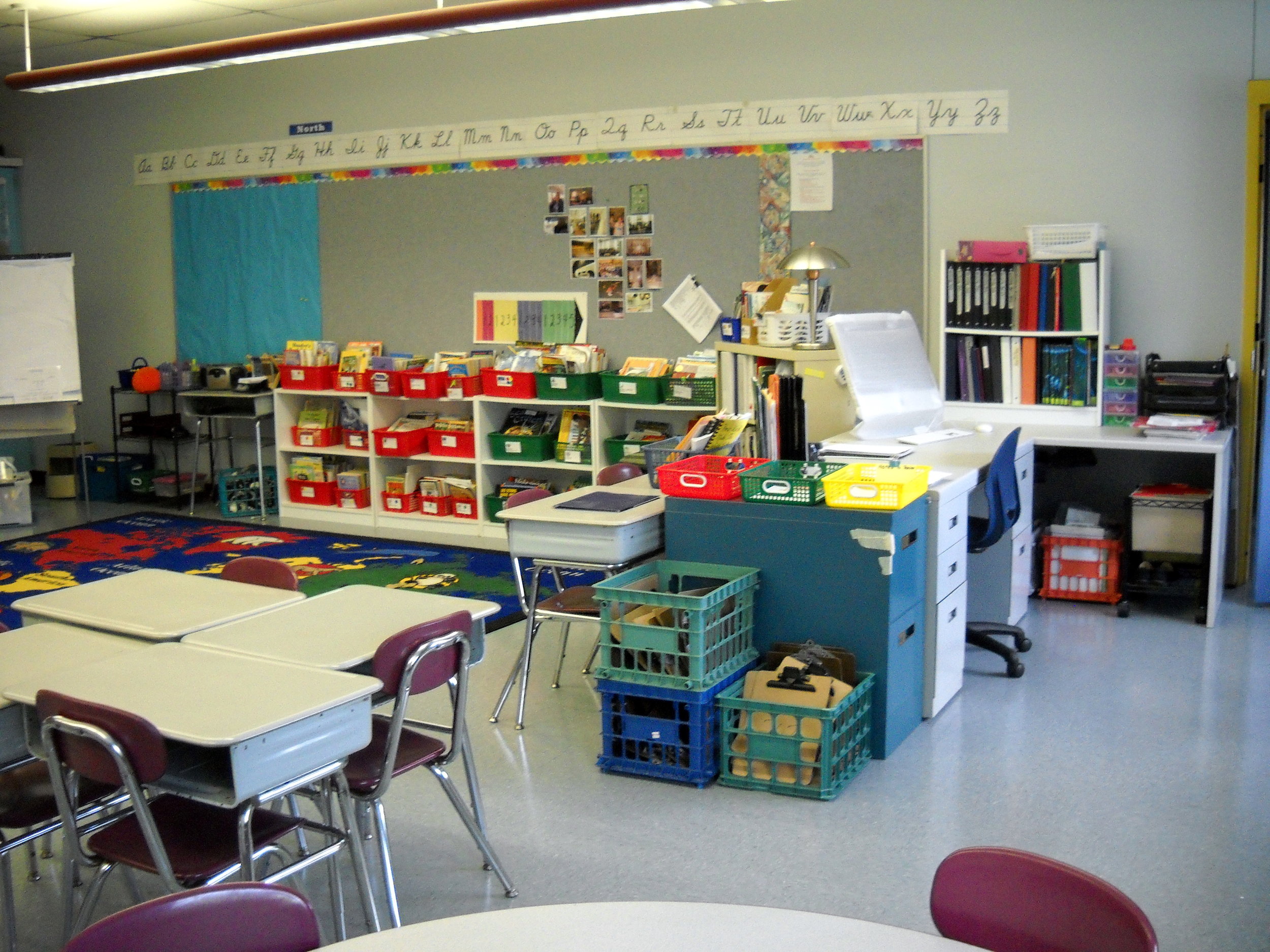 Here's a second view from the front of the room. My desk area, 2 clipboard crates, and my collections baskets are to the right. The table barely visible in the foreground is a round table which I use for conducting small group reading or reading/writing conferences.My current thinking (I love that phrase!) is that I will have students keep all reading materials -- independent
Here's a second view from the front of the room. My desk area, 2 clipboard crates, and my collections baskets are to the right. The table barely visible in the foreground is a round table which I use for conducting small group reading or reading/writing conferences.My current thinking (I love that phrase!) is that I will have students keep all reading materials -- independent book selections, reading binders and any small group materials in the recycled cardboard magazine files (why are the recycled? See the Leveled Library Organization Project) you see on the window shelf. I also will have students keep a reading supply bag in that box - highlighter, stickynotes (cutting a 1/2 pad of 3x2 notes should be enough), bookmark, pencil) - things that take time to locate when moving around the room for Reading Workshop. We create our own Reading Binders using floppy vinyl (red) binders and dividers (more on that later); I'm proud that my students have been very conscientious about taking care of the binders and with one or two exceptions, these are the very same binders I purchased new three years ago. Because there's a very important air flow vent built into the counter directly behind those boxes, I will lay masking tape to mark where the front of the box needs to line up. The blue space behind those boxes is where we generally put a word/vocabulary wall.
book selections, reading binders and any small group materials in the recycled cardboard magazine files (why are the recycled? See the Leveled Library Organization Project) you see on the window shelf. I also will have students keep a reading supply bag in that box - highlighter, stickynotes (cutting a 1/2 pad of 3x2 notes should be enough), bookmark, pencil) - things that take time to locate when moving around the room for Reading Workshop. We create our own Reading Binders using floppy vinyl (red) binders and dividers (more on that later); I'm proud that my students have been very conscientious about taking care of the binders and with one or two exceptions, these are the very same binders I purchased new three years ago. Because there's a very important air flow vent built into the counter directly behind those boxes, I will lay masking tape to mark where the front of the box needs to line up. The blue space behind those boxes is where we generally put a word/vocabulary wall.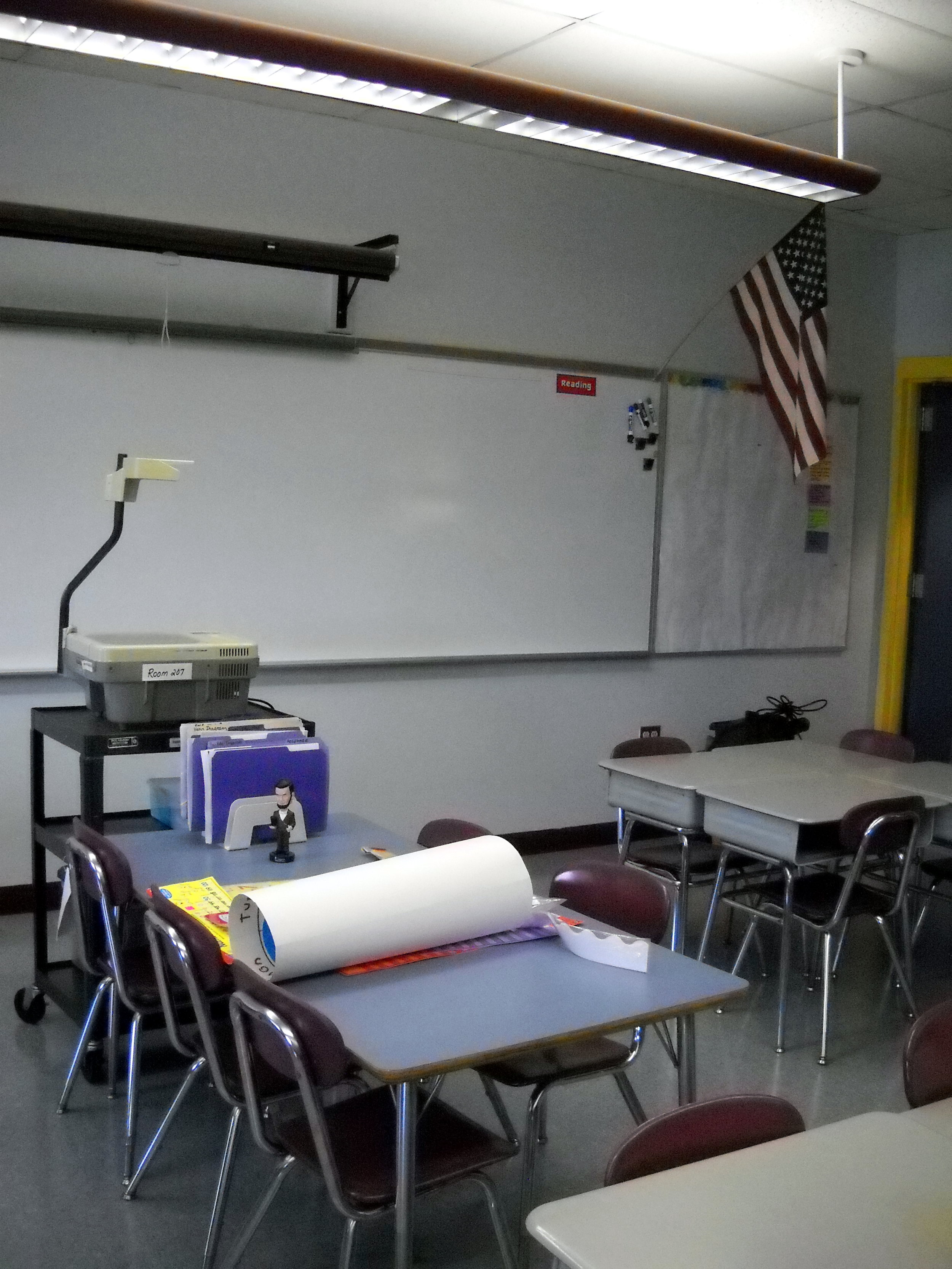 The front of the room looks the most bare at the moment. Usually on one end of the white board we record homework assignments and on the other we keep a magnetic chart tracking where students are in the writing process. I also hang a daily poster of our Reading Workshop Schedule at the front of the room. I do use an overhead a lot. Storing it at the end of the second reading/conference table and rolling it into position works for me. I have a rack of frequently used materials (Venn diagrams, blank story maps) on this table so that students can take them independently.When I moved from the Bailey School to the Lincoln School I was excited because of the shelves! The Lincoln was
The front of the room looks the most bare at the moment. Usually on one end of the white board we record homework assignments and on the other we keep a magnetic chart tracking where students are in the writing process. I also hang a daily poster of our Reading Workshop Schedule at the front of the room. I do use an overhead a lot. Storing it at the end of the second reading/conference table and rolling it into position works for me. I have a rack of frequently used materials (Venn diagrams, blank story maps) on this table so that students can take them independently.When I moved from the Bailey School to the Lincoln School I was excited because of the shelves! The Lincoln was 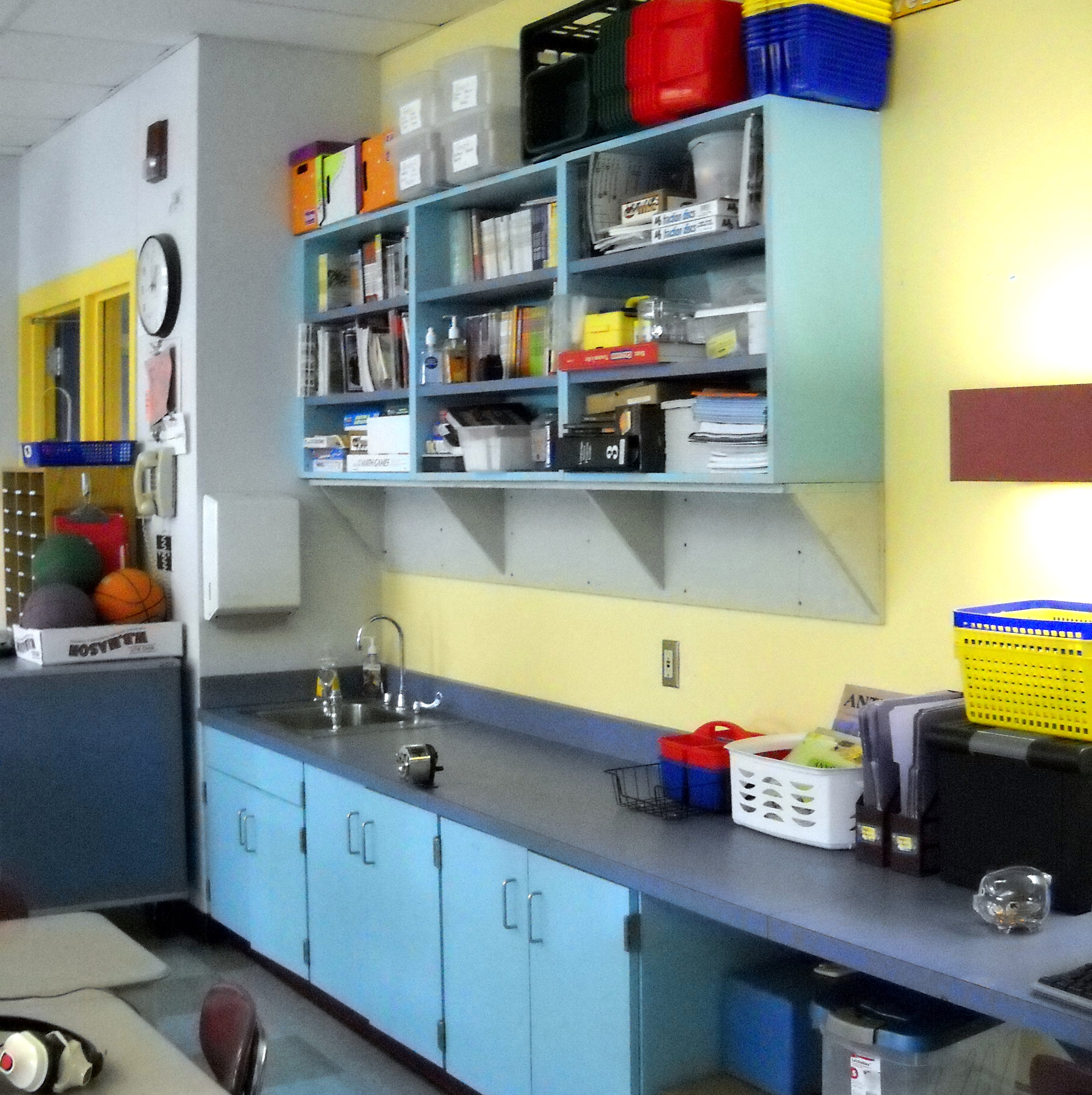 constructed one year after the Bailey and the architect apparently didn't think shelf units over the sink area would be all that useful. Luckily, when the Lincoln was constructed a revision was made and the shelves are well used! In fact, I wish there were more of them -- but then that would just encourage teachers like me to hold on to more STUFF. I have a rolling "art cart" in which I keep a minimal amount of construction paper and lots of composition and math paper. On top of that cart, I have a 24-section sorting file that is used as student mailboxes.
constructed one year after the Bailey and the architect apparently didn't think shelf units over the sink area would be all that useful. Luckily, when the Lincoln was constructed a revision was made and the shelves are well used! In fact, I wish there were more of them -- but then that would just encourage teachers like me to hold on to more STUFF. I have a rolling "art cart" in which I keep a minimal amount of construction paper and lots of composition and math paper. On top of that cart, I have a 24-section sorting file that is used as student mailboxes. This final shot is a closeup of the coat/storage closet area. Over the first 2 doors are pocket folders from R
This final shot is a closeup of the coat/storage closet area. Over the first 2 doors are pocket folders from R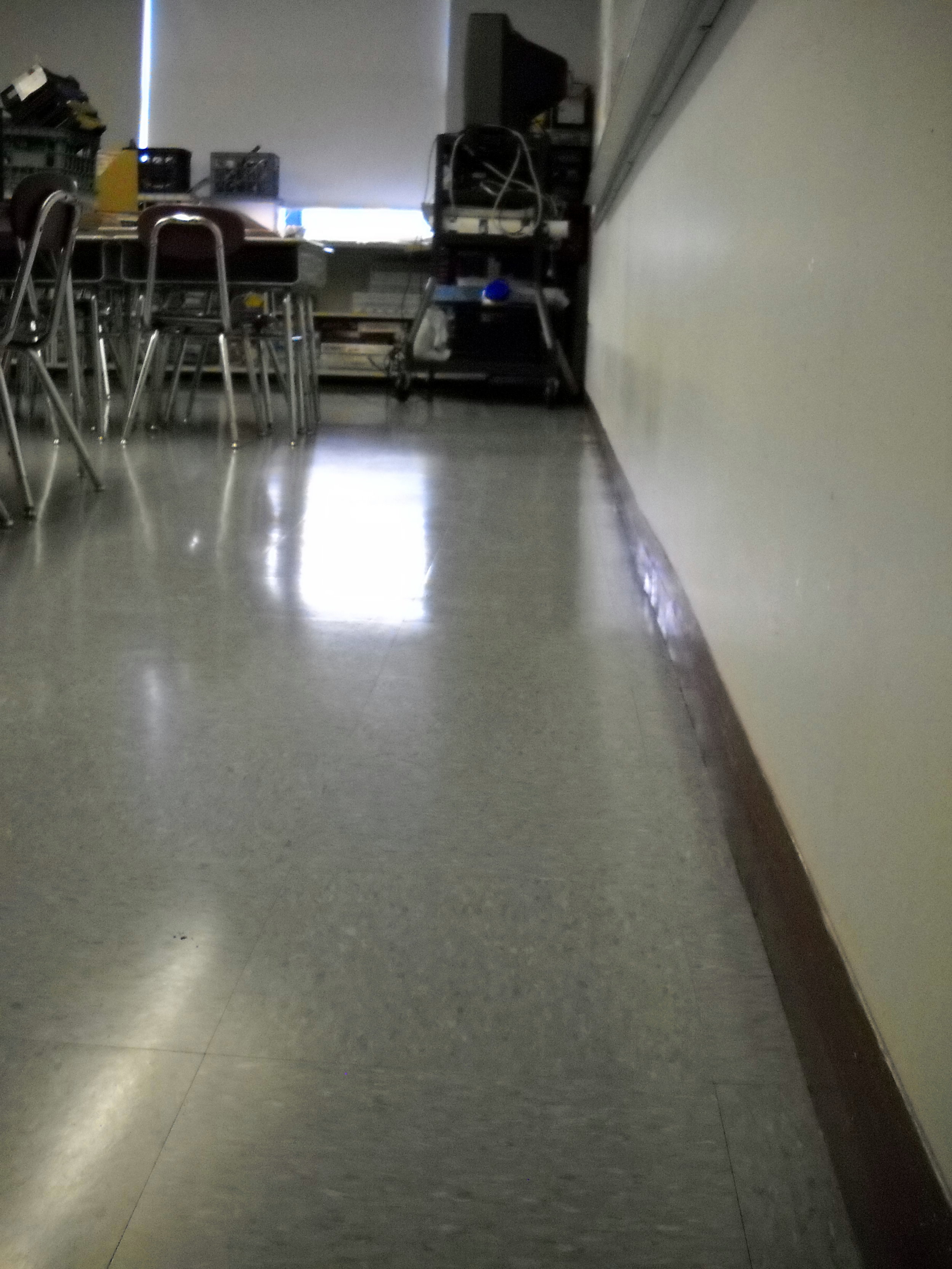 are gone! Bad news: the replacement required some serious sanding before the new tiles could be laid. Everything in my classroom is covered with a fine, white dust.The new floor, however, looks outstanding. No more wheezing - I hope!
are gone! Bad news: the replacement required some serious sanding before the new tiles could be laid. Everything in my classroom is covered with a fine, white dust.The new floor, however, looks outstanding. No more wheezing - I hope!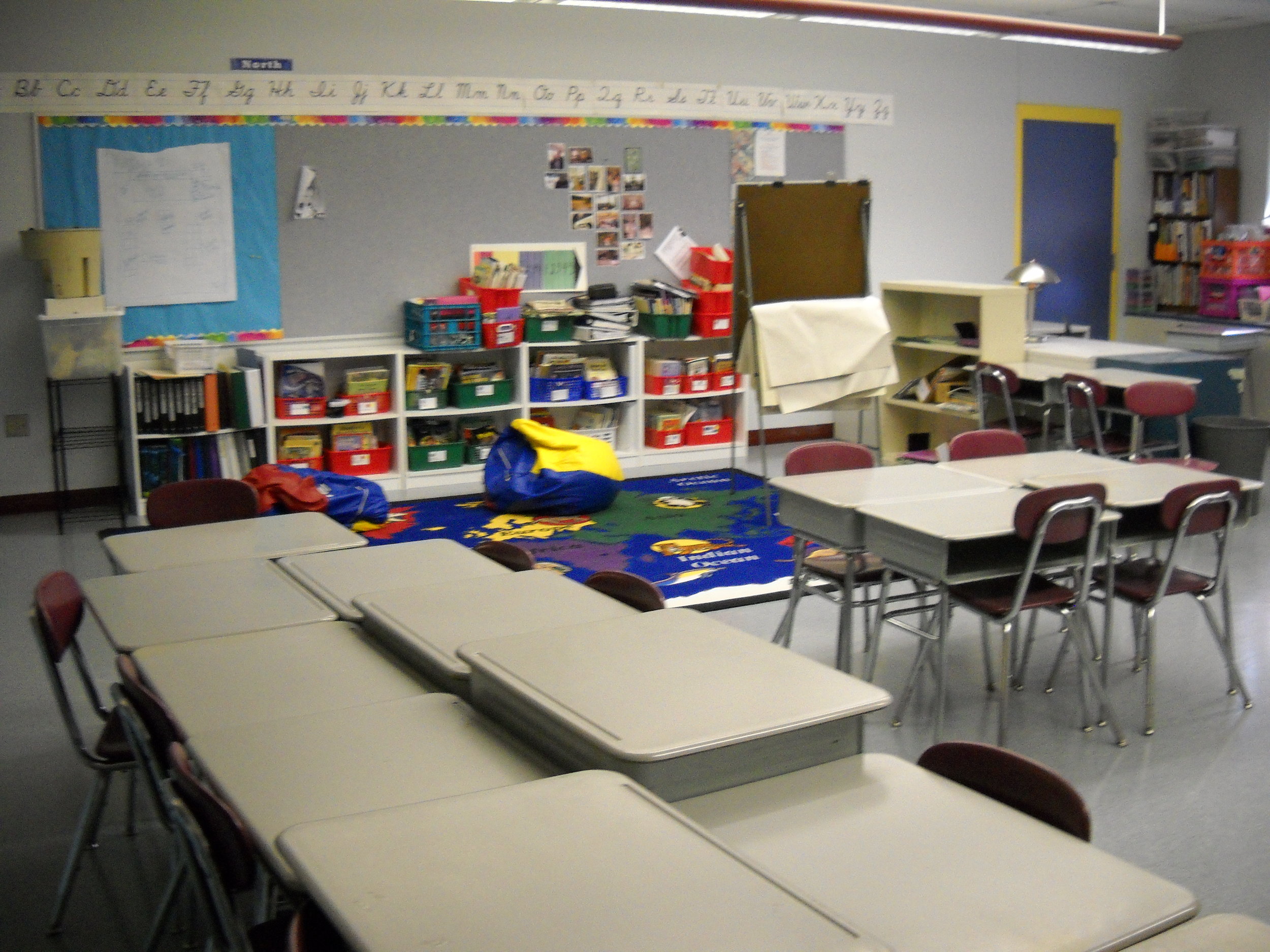 Here's what the classroom looked like after being packed away for the summer and after the custodians removed and replaced all the furniture - including my 5 bookcases full of classroom library books. I don't envy them having to do this each summer.Yesterday was spent surveying what needs to be done so the room can be put back in order before students arrive on September 1. The dust is hopeless -- a wet towel just created cement and didn't really clean off the surfaces, so next trip back I'll bring my shop vac from home. I did manage to wipe down my desk, replace my desktop shelf unit and wipe down the bookshelves.I had left a map of where I wanted furniture replaced after the summ
Here's what the classroom looked like after being packed away for the summer and after the custodians removed and replaced all the furniture - including my 5 bookcases full of classroom library books. I don't envy them having to do this each summer.Yesterday was spent surveying what needs to be done so the room can be put back in order before students arrive on September 1. The dust is hopeless -- a wet towel just created cement and didn't really clean off the surfaces, so next trip back I'll bring my shop vac from home. I did manage to wipe down my desk, replace my desktop shelf unit and wipe down the bookshelves.I had left a map of where I wanted furniture replaced after the summ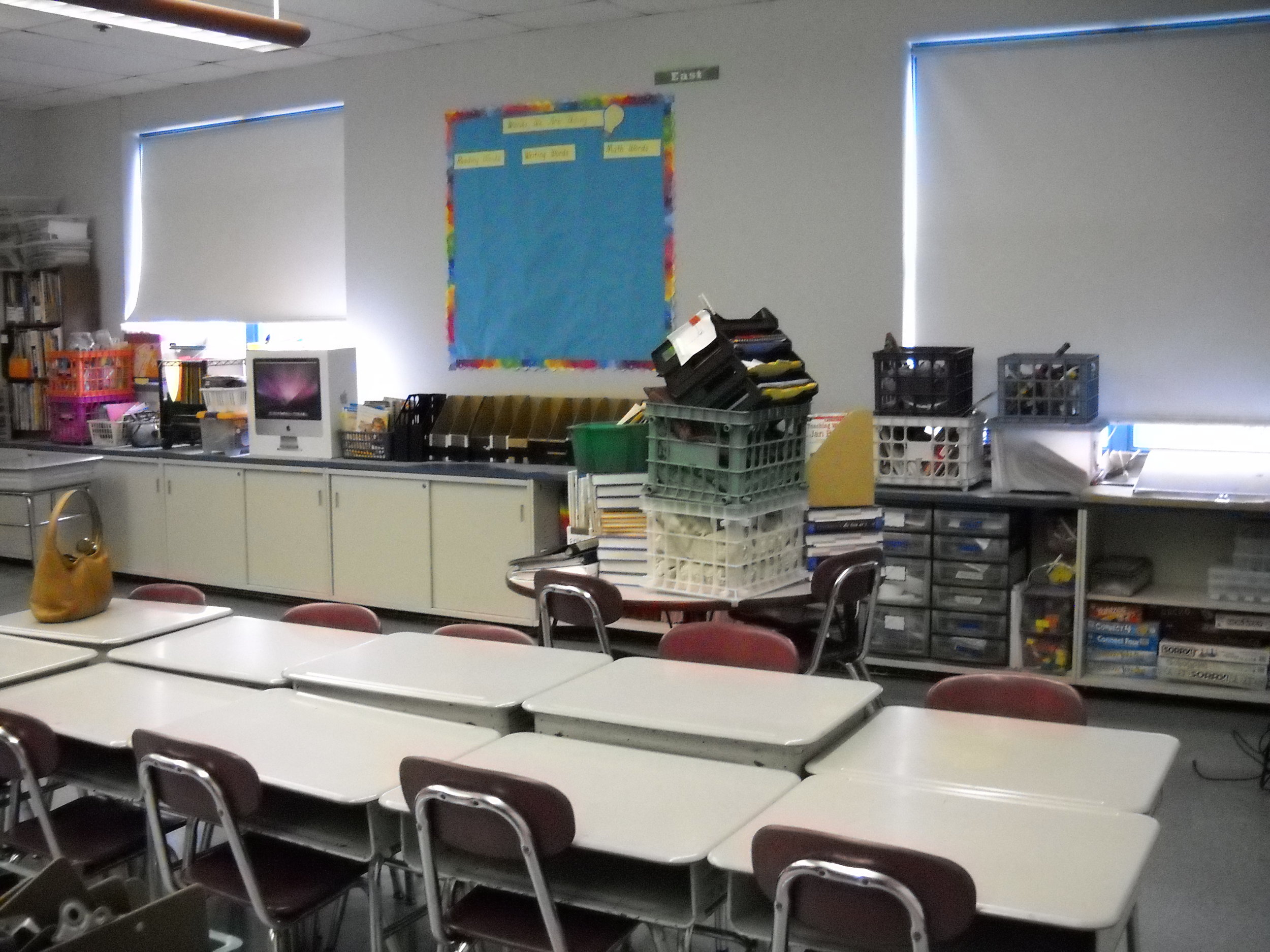 er cleaning and Kevin, Delores and Mark did a great job of following my map! I'm still playing with the desk arrangements; however. I've always had students sit in cooperative groupings; the U-shape that I mapped just seems strange to me -- so I'll probably revisit the desk configurations. And I will have a student with a motorized wheelchair so I need to rethink the room spacing to accommodate.I'm hoping 2 days will be enough time to get all the classroom layout completed, computers reconnected and dusting completed.
er cleaning and Kevin, Delores and Mark did a great job of following my map! I'm still playing with the desk arrangements; however. I've always had students sit in cooperative groupings; the U-shape that I mapped just seems strange to me -- so I'll probably revisit the desk configurations. And I will have a student with a motorized wheelchair so I need to rethink the room spacing to accommodate.I'm hoping 2 days will be enough time to get all the classroom layout completed, computers reconnected and dusting completed.